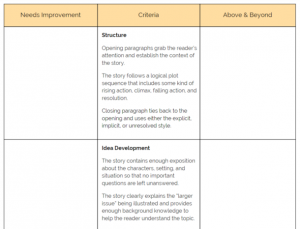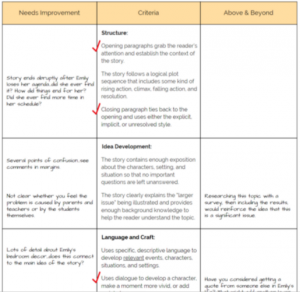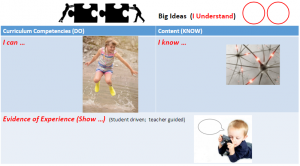
So many ideas to pull together into a cohesive practical manner. We included some strategies for our group to explore.
How do you uncover thinking that gives evidence of insights?
We went back to our template.
Use what you KNOW (content) to DO something real (through activities/strategies/skills/lessons).
Your “evidence of the experience” SHOWS what you UNDERSTAND (these are the assessments –formative, summative, processes, products)
Strategy: As a group, look at the image and discuss:
- What’s the story?
- What’s the other story?
- How do you know the story? (bias? truth?)
- Why tell the story? (why is it important)
- Where’s the power in the story?

Single Point Rubric – consider how this might provide both structure, yet open for inclusion of student input:
(*from Jennifer Gonzales)
The center column is filled with the expected Criteria, leaving the left column “Needs Improvement” and the right column “Above and Beyond” blank.
These columns are filled out by either the student or teacher or in  collaboration.
collaboration.
This is an example of one filled out. The checks indicate the criteria has been met.
By allowing a student to consider possibilities in the “Above & Beyond” column, one wonders if this would open the doors to vast innovative ideas.
One of our teachers (Emily) shared how she used this and was amazed at the increased engagement level.
If you have used this concept, we’d love to hear your experience.

